If you said “pineapple leather” or “pineapple fabric” to the average person on the street they might give you a funny look. The official name for this material slowly making its way into mainstream is Piñatex®, and it is a pineapple leaf based non woven fibre.
Textile technology is huge, and developments are happening all the time. Piñatex® is starting to be seen more in fashion brands, often associated with footwear and bags. You won’t be able to buy it to sew at home (yet) though that doesn’t mean its not worth knowing about!
I’m excited to share with you a bit about Piñatex® from my conversation with Utami Giles. As well as being a sustainable business marketing and branding guru, when we met, Utami also happened to be the Head of Sales and Marketing for Ananas Anam, the company that manufactures Piñatex®.
Pineapple leaf fibre?
This is not a new thing for apparel. Barong Tagalog clothing (the national dress of the Philippines) for example is sometimes made from this – you can read about this on Wikipedia. By the looks of it, extracting the fibre manually seems pretty simple. Take a leaf, scrape off the top and pull out the fibre. Having said that I haven’t tried this at home but next time I find a pineapple I’m going to do a test!
Piñatex® also uses pineapple leaf fibre, but turns it into a non woven material suitable for a range of uses including fashion.
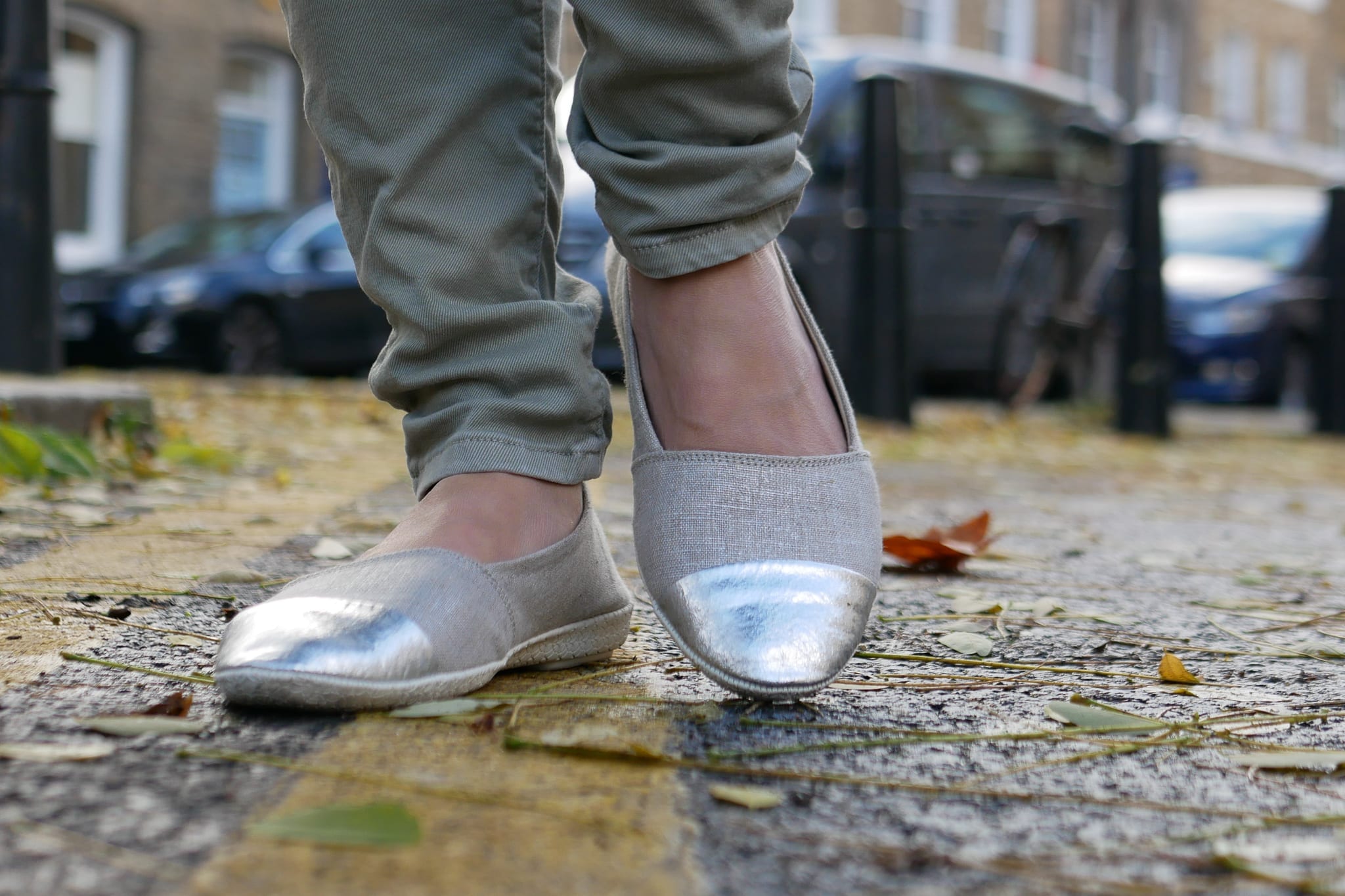
Production method
Leaves are taken from pineapple plantations in the Philippines. Extracting the fibres from leaves involves a mechanical “decortication” process. This involves feeding leaves through a semi automated machine several times to get the fibres. The fibres are then washed in river water next to the plantations and dried in the sun. Leaf waste is turned into fertiliser for reuse on the pineapple plantation, or sold on.
The dried fibre is sent to a factory in the Philippines for de-gumming, mashing and cellulose removal. It is then mixed with corn based polylactide (PLA) (the ratio is 80% pineapple leaf fibre and 20% PLA) to create the Piñatex® material. This is formed into rolls 155cm wide and 50-60 linear metres long.
The rolls are transported to Spain for finishing. This involves adding a petroleum based PU coating to the material. Finally, colour transfer sheets are used to apply colour.
Piñatex® and sustainability
- The pineapple leaves are a byproduct of the food industry. They provide an additional income stream to pineapple farmers in the Philippines for what would have been waste. For context, each pineapple produces 38-42 leaves and Piñatex® production requires 12-18 leaves from each pineapple. Not all leaves are suitable. The outside leaves are old and stiff, and the inside leaves are too young.
- Extracting and processing the pineapple fibres is a chemical free process – river water is used for washing and the sun is the dryer.
- The PLA is a bioplastic from renewable resources (corn) and is biodegradable (albeit will take a few years).
Fun fact: the most planted fruit in the world is mango, followed by pineapple. High output places for pineapple are Costa Rica, Brazil, Philippines, Indonesia.
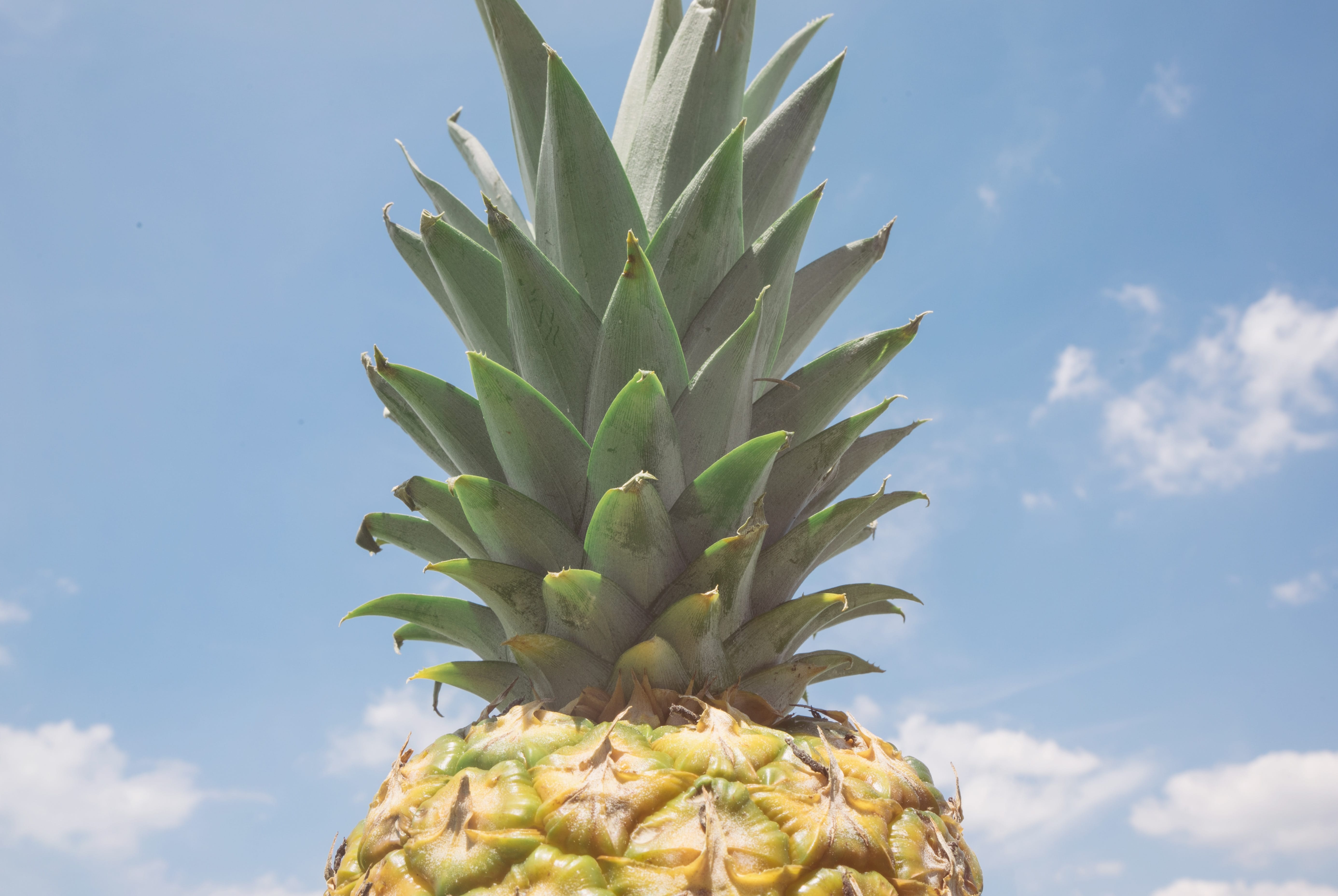
But as you might expect, Piñatex® is not too good to be true. Some challenges and quirks:
- Piñatex® is not yet 100% “sustainable”. According to Utami it is around 88% because of the need for the polyurethane coating. This is added to meet durability requirements of the fashion industry. It is possible to make Piñatex® without the coating. But if for example Hugo Boss has a line of limited edition Piñatex® upper shoes, you don’t want these composting after several weeks wear! Piñatex® is not as durable as leather but it is sufficient for fashion purposes.
- Carbon footprint – the pineapples are grown in the Philippines and much of the processing is done there, but the finishing is done in Spain. Speaking of finishings, colouring does not use natural dyes, but it is another area where Ananas Anam plans to review.
- The basic cream colour of Piñatex® can be variable depending on sun strength. In the rainy seasons the fibre will not be as pale. Because of the variation, if clients want bespoke colouring, the factory will produce the requested Pantone shade plus 2 shades above and 2 shades below for sampling. This tends to affect lighter colours such as Paprika, but is less of an issue for darker shades like chocolate and charcoal.
Future plans and scaling up
Development of Piñatex® as a material started around 7 years ago, and the company Ananas Anam is around 4 years old. As a relatively new company with a new material, they has been selective over who they partner with. Every sales request is vetted; when Utami and I discussed Hugo Boss, she talked about being able to visit their men’s shoes factory in Italy and the use of recycled and organic materials for the Piñatex® shoe line. (As an aside, the Fashion Revolution Transparency Index scores Hugo Boss as 31-40% – you can read that here).
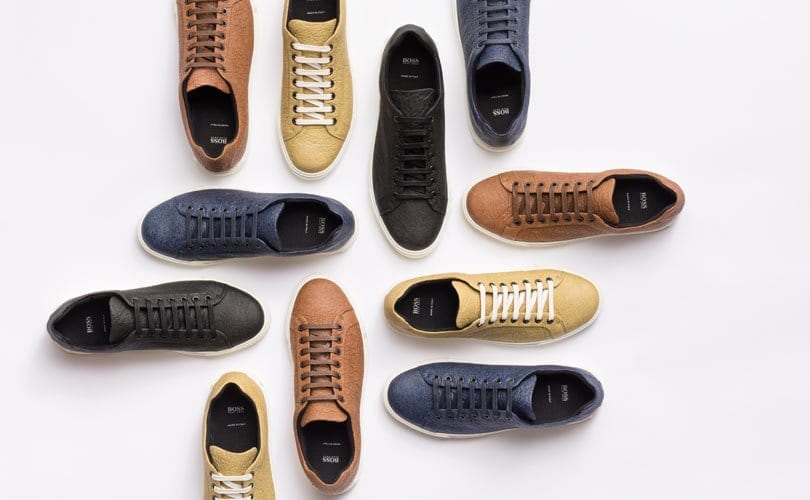
There are three main applications for Piñatex® – besides fashion there is also the upholstery and automative interiors market. But to serve these markets production needs to be increased. Ananas Anam works with farming co-operatives in the Philippines and there is government support for investing in fully automating the decorticating process. This would mean each leaf only needs to go through the machine once, and would result in fibre output increasing by up to 5%. As production expands, Ananas Anam may also look at working with farms in other pineapple producing countries.
The good news is that Utami assures me that the world will not need to grow anymore pineapples to make more Piñatex®. 16 pineapples make 1 linear metre of Piñatex®!
When can I get this stuff?
If you are like me and dreaming about making an Ida clutch in gold Piñatex®, unfortunately you have to exercise some patience. There isn’t sufficient production scale at the moment to serve the retail market in terms of buying yardage but you can buy it in ready to wear. I decided to buy some Po-Zu shoes for the office (pictured above) but if you hit up google you can get see what brands are using Piñatex® in their products.
I’m going to finish off here by thanking Utami for her time to teach me about Piñatex®. And thanks to you for reading this and geeking out with me! (you can read my other fabric related posts here). If you’ve come across or bought any Piñatex® products then please let me know how you feel about them!
PIN FOR LATER:
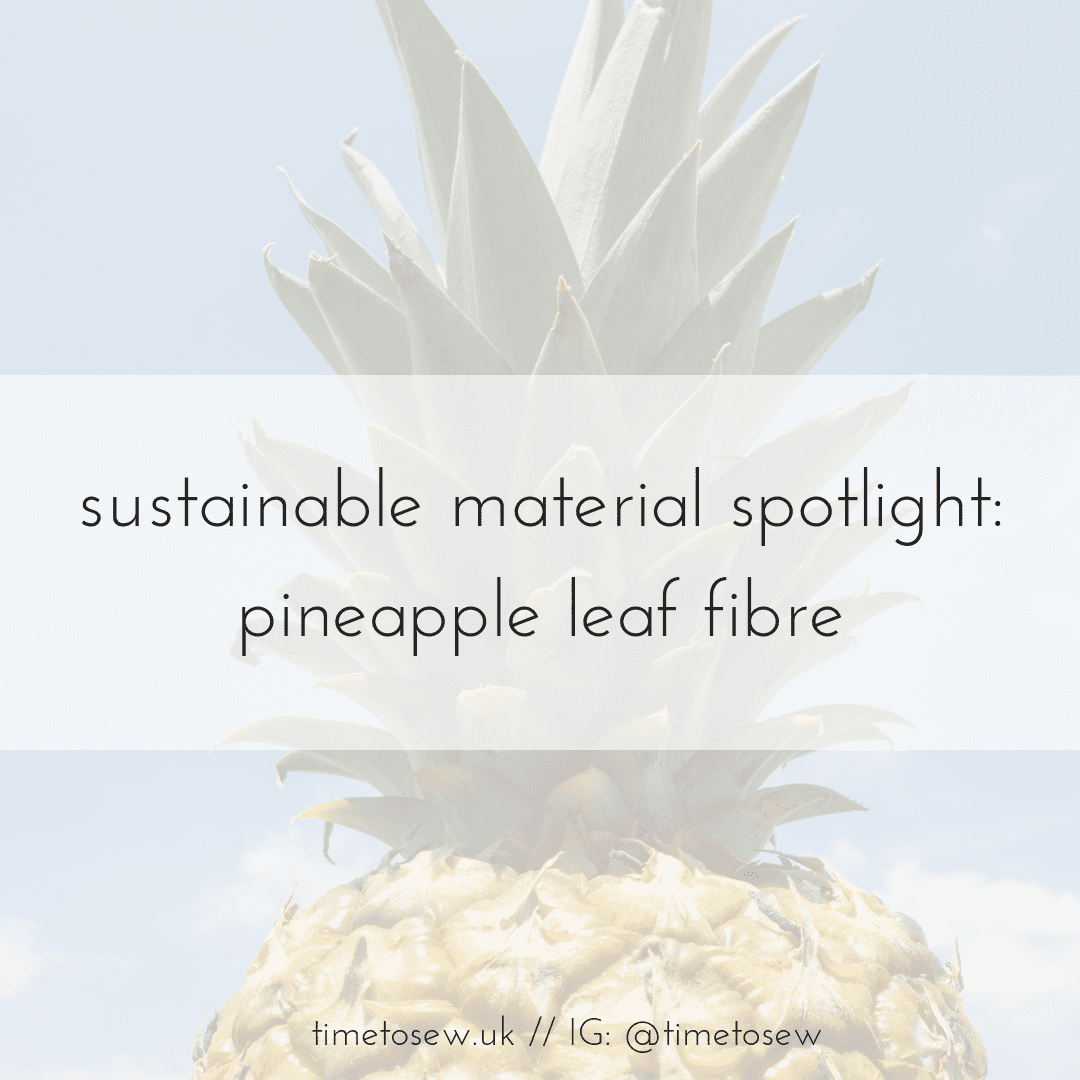

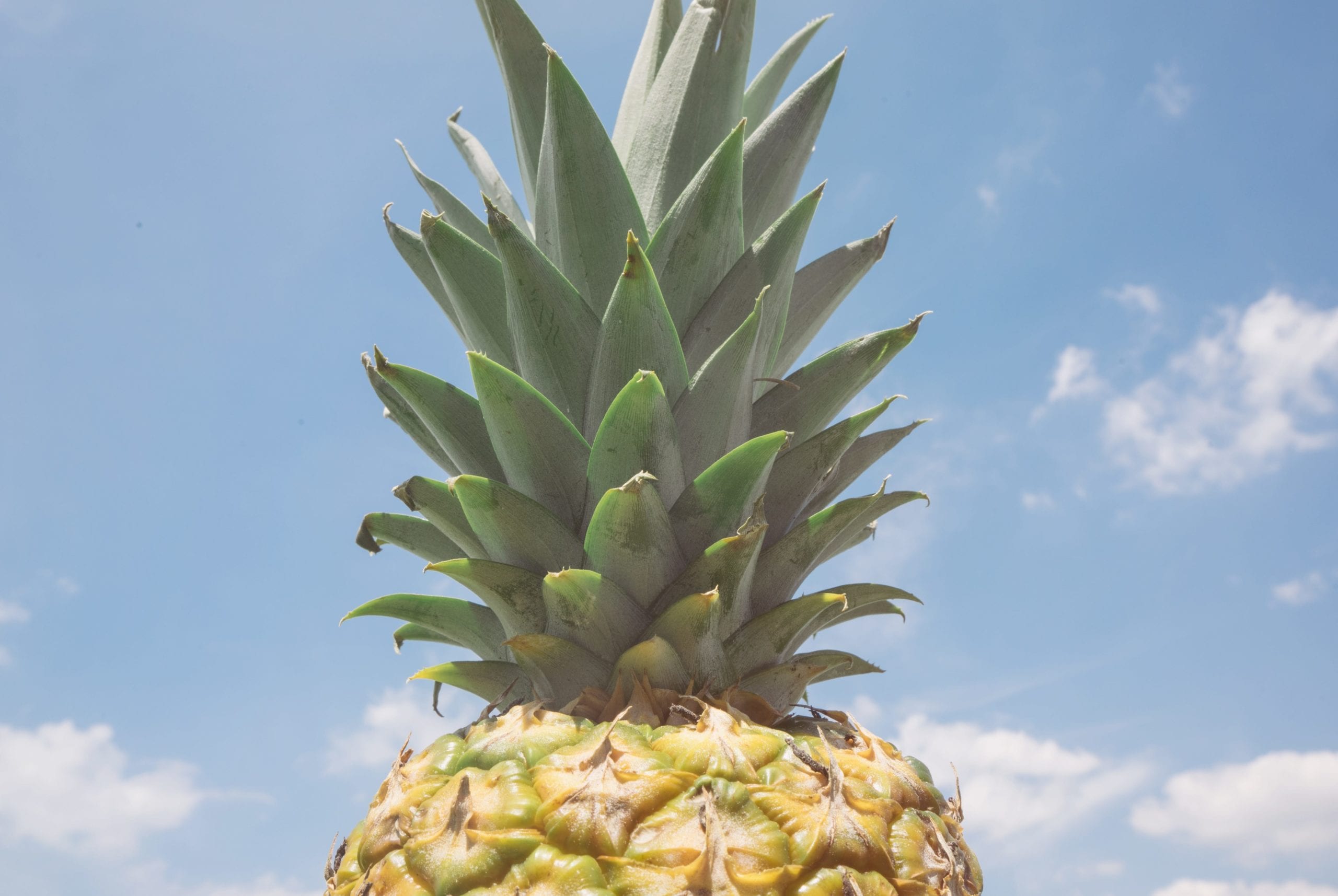
4 comments
New (sustainable) fibres and fabrics are so interesting, especially when they go back to using “old” production methods like washing in the river and drying in the sun. Thanks for the info, I LOVE the fact that they make use of what otherwise goes to waste. If they can finish them locally without transporting all the way to Spain, how fantastic would that be?
Hi Sil, I’m really hopeful that this will continue to be a successful product; they have collaborated with some medium and big brands and I hope this will continue. There are also types of fruit based material (I’ve seen apple leather for example) and I hope to be able to find someone to talk to me about it at some point!
Thanks for this article Kate. I never knew about such a thing as this – so much potential!